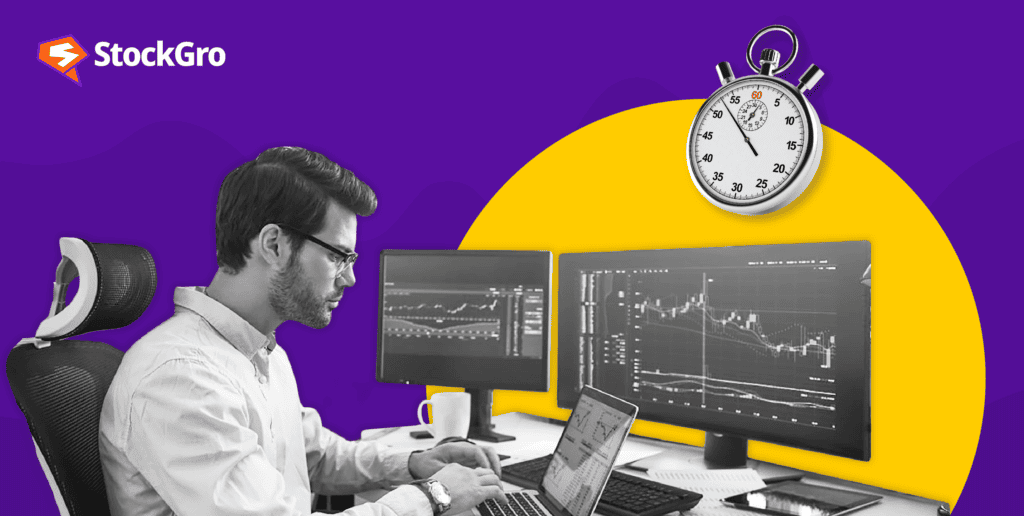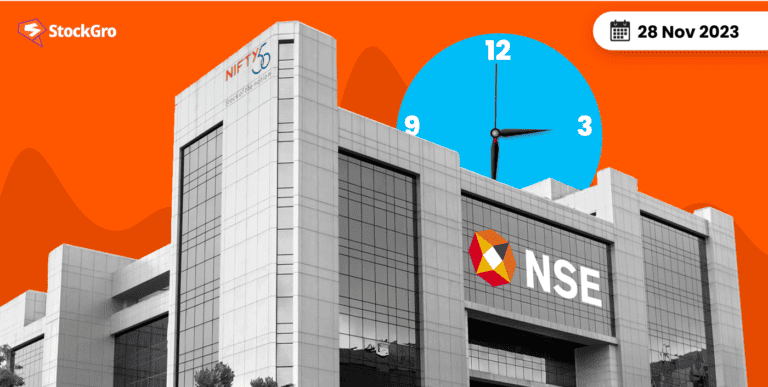
High-Frequency Trading (HFT) is the application of a hyper-modern and dynamic version of financial markets, offering lightning-fast transactions and automated algorithms to make money. This sophisticated form of trading leverages cutting-edge technology, allowing for the execution of thousands of trades within fractions of a second. As exciting as that may sound, it comes with its own set of risks.
In this article, we will explore what HFT is, its pros and cons, and whether you should consider getting in on it.
You may also like: Automate your unique trading strategies with the help of algo trading.
What is High-Frequency Trading (HFT)?
High-Frequency Trading is trading that uses powerful algorithms, massive computing power, and a lot of data to conduct many trades within incredibly short time frames.
Firms that engage in HFT buy or develop complex algorithms to analyse market conditions, sentiments, past patterns, and historical data to execute orders, and capitalise on fleeting opportunities within milliseconds.
Proprietary trading firms, investment banks, and hedge funds often execute these trades. HFT, in most cases, only works when the price movements are minuscule but the leverage is too high for a regular investor.
Understanding the pros and cons
The best way to decide whether you should do something is to understand if its pros outweigh the cons (or vice versa).
Pros of HFT
- A lot of liquidity – Since HF trades involve a lot of leverage and multiple transactions, liquidity in these markets is always high. There is no dearth of buyers and sellers at any point during trading hours, which means that the bid-ask spread remains low. As an investor, it becomes easier to buy and sell large amounts of assets at a specific price without adjusting for volatility.
- Higher efficiency in the market – Since HF traders predict and aim to capitalise on very small price movements, they are always looking for news or headlines that might impact their share prices negatively or positively. Since they react almost immediately to any such changes with high leverage, they contribute to pricing the asset more accurately with each breaking news, contributing to the efficiency of the market.
Also Read: How to pick winning stocks with quantitative analysis: A beginner’s guide
Cons of HFT
- Volatility – Drawing from the point above, since HF traders price in every news and update in the markets to the price of the asset, they naturally deal with a lot of volatility on their end. High leverage and multiple trades within seconds further contributes to this volatility.
- Unfair advantage – High amounts of leverage, large quantities per trade, and multiple trades naturally requires a lot of capital. HF traders, hence, are almost never retail investors – they’re almost always institutional with boatloads of cash. They also have money to spend on algorithms, computers, and real-time market data that helps them move fast.
- Market manipulation and systemic risks – HFT’s complex algorithms and rapid trading can sometimes lead to market manipulation or glitches, potentially posing systemic risks to the financial markets. Sudden crashes or technical issues in HFT systems can disrupt the entire market, impacting all types of investors, including ones not involved in trading.
Why it’s probably not a good idea to get into HFT
Here are some quick reasons:
- You need speed — HFT relies on lightning-fast execution, utilising cutting-edge technology and direct market access. The systems and infrastructure needed to execute trades in microseconds or milliseconds are incredibly expensive and beyond the reach of individual retail investors; not to mention the average investor wouldn’t know how to use them either.
- Access to real-time market data — By the time you hear about something on the Wall Street Journal, traders have already priced in the event and moved on to the next thing. Access to real market data also comes at a price, which includes high speed connections, a reliable human network, and a Bloomberg terminal.
- Risk – Let’s face it – retail investors can’t afford to lose crores of rupees on a single trade. But institutions can. And do.
Also Read: Hedge funds: How to take advantage of market volatility
Conclusion
Retail investors often seek long-term investment strategies, emphasising fundamentals, and typically lack the resources and infrastructure required to compete in the high-speed, technology-driven realm of high-frequency trading.
Unless you have the resources of a financial institution and the combined knowledge of a room full of professional, lifelong traders, HFT is probably a long shot. But it never hurts to learn!

